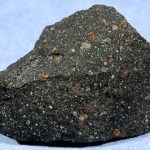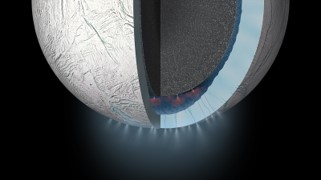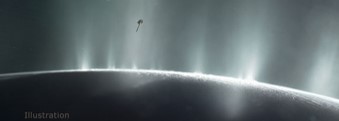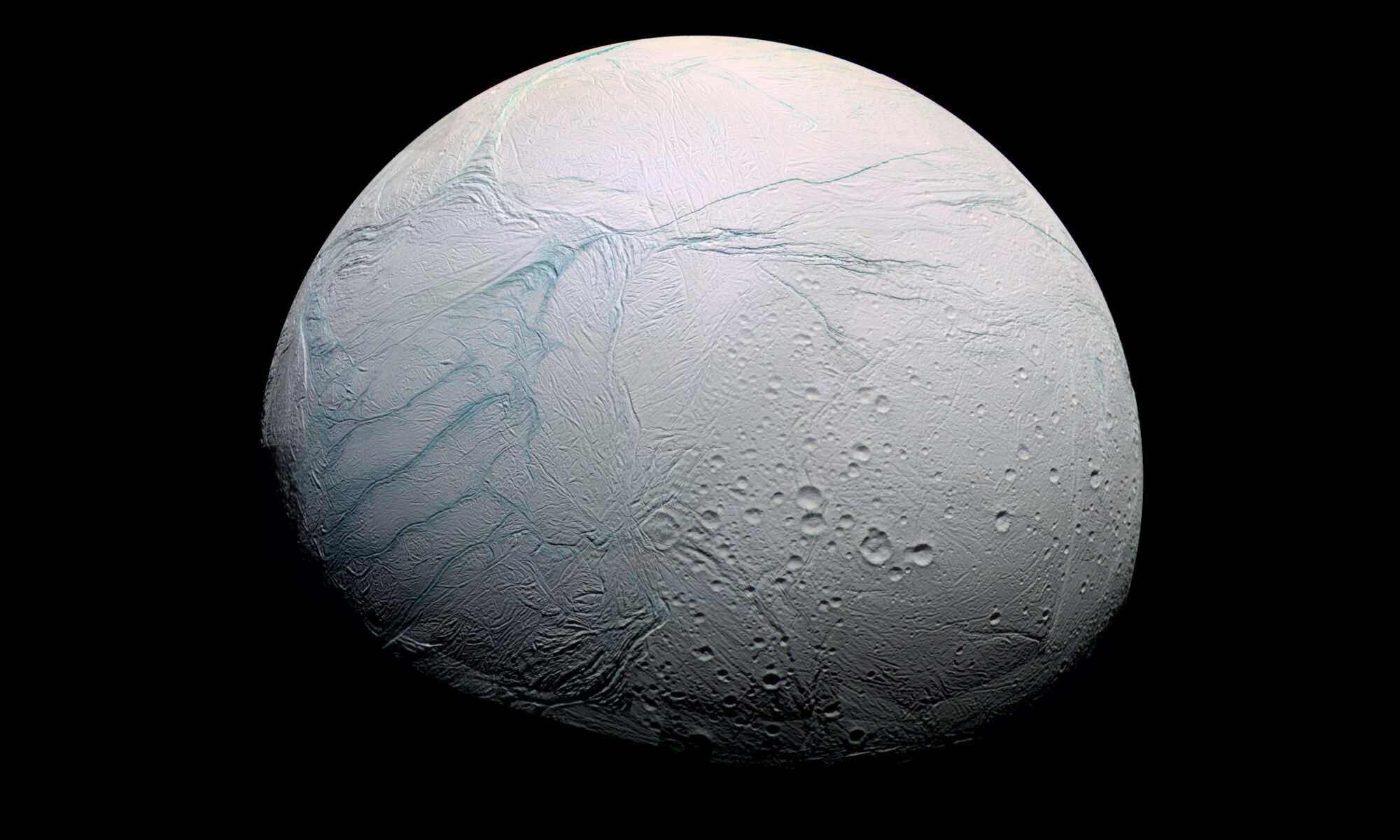Carbon Compounds

Meteorites likely delivered carbonaceous chondrites to Enceladus that then interacted with low temperature water to produce enormous complexity in chemical composition.
Liquid Water
The presence of molecular hydrogen at Enceladus vents further suggests hydrothermal activity in a subsurface ocean.

It is likely that Enceladus formed with carbon-heavy bulk CI. The dwarf planet Ceres was also formed with bulk CI and was found to be uniquely aqueously altered, potentially home to an ocean at one point in time. This further points to Enceladus housing a subsurface ocean.
Energy Sources
 The plumes of Enceladus resemble hydrothermal vents, releasing significant energy. This connects to a prominent theory on how life might have arisen on early Earth.
The plumes of Enceladus resemble hydrothermal vents, releasing significant energy. This connects to a prominent theory on how life might have arisen on early Earth.
Nitrogen & Amino Acids
Cassini detected trace amounts of ammonia and large light organics, as well as percent amounts of nitrogen, carbon dioxide, and carbon monoxide.
The presence of a salty liquid water ocean, laced with organic compounds and venting into space, makes this little moon the most promising place in the solar system to conduct further, more in-depth astrobiological investigations.
